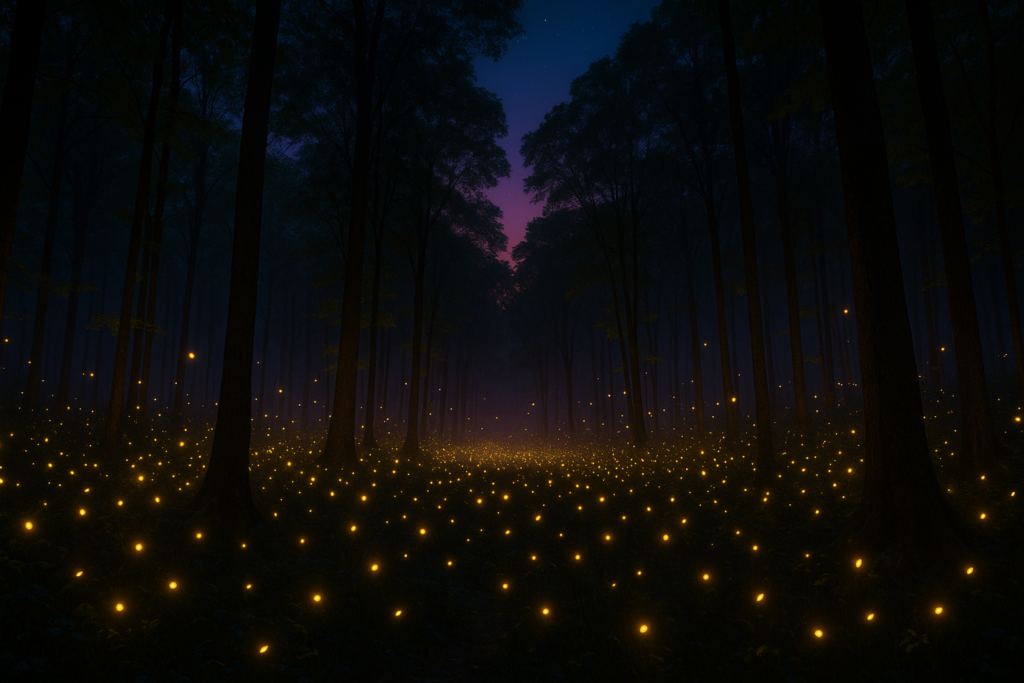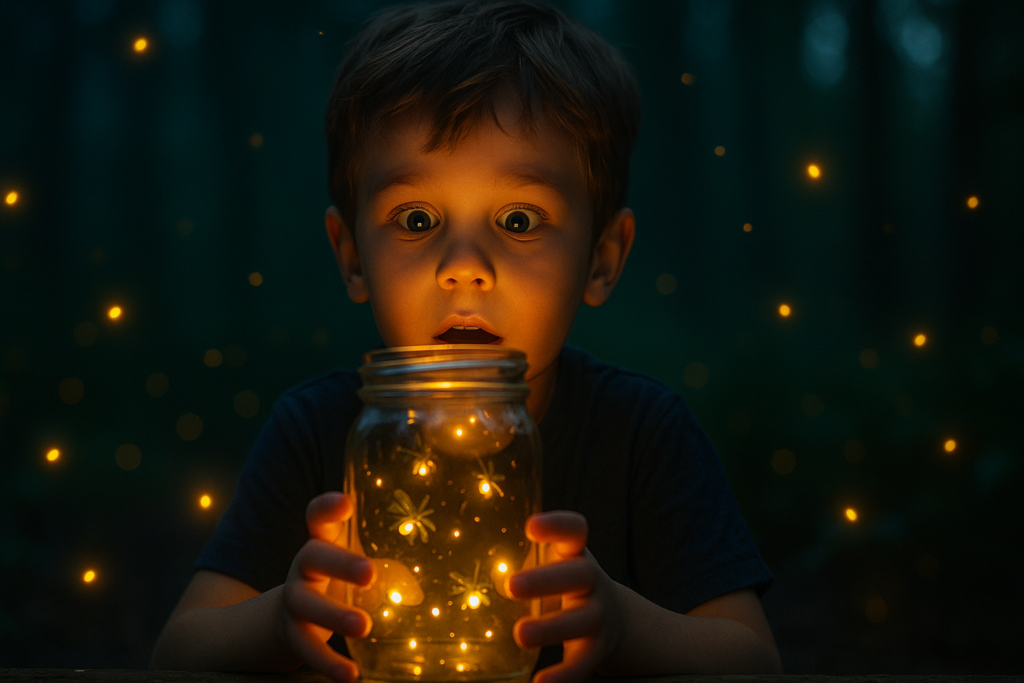Fun Fact: Fireflies aren’t flies—they’re actually beetles that can create light without heat!
In a world where artificial lights flood our cities and drown out the stars, there’s something almost magical about a forest flickering with fireflies. This natural light, known as bioluminescence, is more than just a visual delight. It’s chemistry, communication, survival strategy, and now, a vanishing wonder.
“Bioluminescence and Fireflies: Natural Light in a Darkening World” invites you into a realm where light doesn’t just illuminate—it speaks, seduces, and survives. But this glowing gift of evolution is under threat, not from predators, but from us.
What Is Bioluminescence?
Bioluminescence is the ability of living organisms to produce light through a chemical reaction. This reaction typically involves a light-emitting molecule called luciferin, an enzyme called luciferase, and oxygen. When luciferin is oxidised, it emits light—no electricity, no heat, just nature’s cold fire.
While most famously seen in fireflies, bioluminescence also appears in deep-sea creatures like anglerfish, comb jellies, and even certain types of plankton. Fungi like Mycena chlorophos and bacteria such as Vibrio fischeri can glow as well.
Fireflies: Glowing Messengers of the Wild
Fireflies (also known as lightning bugs) are a family of beetles called Lampyridae. They emit bioluminescent signals from their abdomens, mostly to attract mates. Each species has a unique flash pattern—like a Morse code of love.
Males typically fly around blinking a rhythm unique to their kind. When a female spots a flash she likes, she responds from the ground. What happens next? Romance, of course—firefly style.
But not all signals are for courtship. Some species mimic the flashes of others to lure them in and eat them. Yes, love can be deadly when you’re a firefly.
More Than Just Pretty Lights
Bioluminescence isn’t just beautiful—it’s practical. Here’s how different creatures use it:
- Camouflage: Certain squid create counter-illumination to blend with the ocean’s surface light and hide from predators.
- Luring Prey: Anglerfish have a glowing bait on their heads to attract small fish.
- Self-defence: Some marine organisms emit a cloud of glowing fluid to distract or confuse predators.
- Symbiosis: Bacteria living in the Hawaiian bobtail squid help it glow, and in return, get a cosy home inside its body.

The Cultural Magic of Fireflies in India
In parts of Maharashtra, India, entire forests light up with synchronised firefly displays before the monsoon. This spectacle, known as the Purushwadi Firefly Festival, attracts thousands of eco-tourists every year.
Fireflies are not just insects in rural India—they are timekeepers, messengers, and metaphors. In Bengali and Hindi poetry, fireflies are symbols of fleeting beauty and ephemeral hope.
The Vanishing Glow: What’s Killing the Fireflies?
Sadly, fireflies are disappearing. And we are to blame.
- Light Pollution
Artificial lights disrupt the intricate mating signals of fireflies. Imagine trying to read a blinking text on your phone during a strobe party—good luck falling in love that way.
- Habitat Loss
Urban sprawl and deforestation destroy the moist, marshy environments where fireflies thrive.
- Pesticides and Pollution
Agricultural chemicals kill not only pests but also soft-bodied insects like fireflies.
- Climate Change
Altered rainfall patterns and rising temperatures can mess with the fireflies’ seasonal rhythms, affecting their emergence and mating cycles.
The Science Race to Understand—and Protect—the Glow
Scientists across the globe are studying bioluminescence for applications beyond aesthetics.
- Medical Diagnostics: Luciferase enzymes are used in labs to detect genetic material, like viruses or cancer biomarkers.
- Environmental Monitoring: Bioluminescent bacteria can detect pollutants in water.
- Military and Space Tech: NASA has studied bioluminescence to explore communication systems for deep-sea and space exploration.
In India, institutes like the Indian Institute of Science (IISc) in Bengaluru are exploring bioluminescent markers in genetic engineering and ecological research.

Citizen Scientists to the Rescue
You don’t need a PhD to save fireflies.
- Turn off unnecessary lights during firefly season.
- Create insect-friendly gardens with native plants.
- Avoid chemical pesticides.
- Support eco-tourism initiatives like the Purushwadi Firefly Festival.
Organisations like Firefly Watch (USA) and Nature Mates (India) are working with citizen volunteers to track firefly populations and promote conservation awareness.
A World Without Natural Light?
In a future obsessed with artificial intelligence (AI) and LED displays, the silent pulse of a firefly’s glow may seem quaint. But we’d do well to remember: their light is real, earned through millions of years of evolution.
When we lose fireflies, we lose more than insects. We lose stories, signals, and silent science—flashes of biology that no touchscreen can replicate.
Conclusion: Can We Keep the Night Alive?
Bioluminescence isn’t just a scientific curiosity or an Instagram-worthy moment in the jungle—it’s a living language. It reminds us that darkness is not empty, that life finds a way to shine even without electricity.
As fireflies vanish from our backyards and minds, we must ask ourselves: Are we willing to give up real wonder for the illusion of brightness?
The answer might just determine how dark our future really becomes.
Author’s Note
Bioluminescence is more than a light show—it’s an urgent signal from nature. If we stop to notice it, we might learn how to live a little more lightly, glow a little more gently, and make space for magic in the margins.
G.C., Ecosociosphere contributor.
References and Further Reading
- National Geographic: Bioluminescence
- The Mysterious Decline of Fireflies
- Firefly Watch
- Nature Mates
- Bioluminescence in Holbox – SeaportCredit. https://seaportcredit.com/bioluminescence-in-holbox




